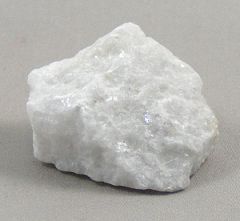![]()
![]()
![]()
Use LEFT and RIGHT arrow keys to navigate between flashcards;
Use UP and DOWN arrow keys to flip the card;
H to show hint;
A reads text to speech;
7 Cards in this Set
- Front
- Back
|
Rock Layers |
Sedimentary rocks form in layers over millions of years. If you look at a cliff made from sedimentary rock, you’ll notice distinct layers that may even be different colors. Changes in the environment cause changes in the rocks. For example, a volcanic eruption may create a layer made of hardened ash. The oldest layers of rock are at the bottom. Newer layers are at the top. Sometimes, the layers are twisted or tilted because of the movement of the Earth’s tectonic plates. Rocks on a fault line may snap or break. Scientists study these layers to learn more about the Earth’s history. Radiometric dating measures radioactive elements in the rocks. Scientists can learn exactly how old a rock is by using radiometric dating. Sources: http://easyscienceforkids.com/all-about-layers-of-rocks/ |
|
|
Rock Types |
Sedimentary, Metamorphic, Igneous |
|
|
Sedimentary Rocks |

Sedimentary rocks are made when sand, mud and pebbles get laid down in layers. Over time, these layers are squashed under more and more layers. Eventually, the layers are lithified – turned to rock. Sedimentary rocks can be formed and found in deserts , lakes, rivers and seas . |
|
|
Metamorphic Rocks |

Metamorphic rocks form when existing rocks are exposed to heat and pressure deep within the Earth's surface. Marble and slate are examples of metamorphic rocks. Metamorphic rocks are formed under extreme pressure combined with heat over time. |
|
|
Igneous Rocks |

Igneous rock is formed when magma cools and solidifies, it may do this above or below the Earth's surface. Magma cools inside Earth, Lava cools on Earth’s surface (volcanoes). There are over 700 different types of igneous rocks. Some examples of igneous rocks are: basalt, granite, pumice, obsidian, tuff, diorite, gabbro and andesite. |
|
|
Relative Dating |
Relative dating is used to arrange geological events, and the rocks they leave behind, in a sequence. Relative dating does not provide actual numerical dates for the rocks. |
|
|
Geological Time Scale |

|

